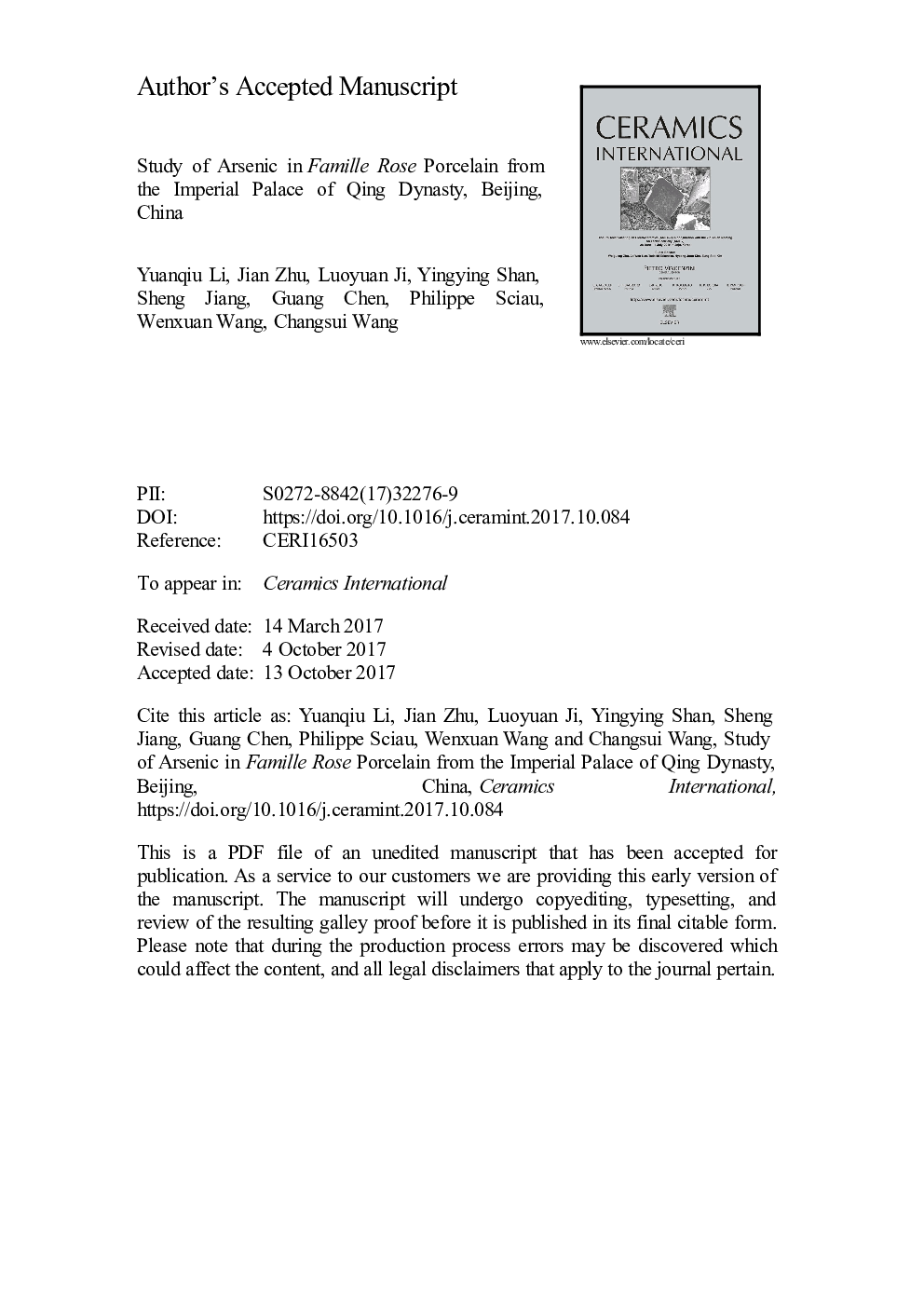| کد مقاله | کد نشریه | سال انتشار | مقاله انگلیسی | نسخه تمام متن |
|---|---|---|---|---|
| 7888916 | 1509796 | 2018 | 23 صفحه PDF | دانلود رایگان |
عنوان انگلیسی مقاله ISI
Study of arsenic in Famille rose porcelain from the Imperial Palace of Qing Dynasty, Beijing, China
دانلود مقاله + سفارش ترجمه
دانلود مقاله ISI انگلیسی
رایگان برای ایرانیان
موضوعات مرتبط
مهندسی و علوم پایه
مهندسی مواد
سرامیک و کامپوزیت
پیش نمایش صفحه اول مقاله

چکیده انگلیسی
Famille rose porcelain from the imperial workshop was one of the symbols of the highest level of manufacturing techniques in ancient China. It was very precious and only owned by the royals at the early stage. The major feature of famille rose is the use of opaque white pigment. Considered to originate in Europe, this technique was a witness of technological exchanges between China and European countries in the 17th-18th centuries. However, limited by its preciousness, most of the previous studies focused on the chemical composition of famille rose relics via nondestructive analysis methods. In this work, selected samples excavated at the Forbidden City of China were analysed by microscopy observation, Laser Ablation Inductive Coupled Plasma-Atomic Emission Spectrometry (LA-ICP-AES), synchrotron radiation X-ray Absorption Near-Edge Spectroscopy (XANES) and micro X-ray Diffraction (μXRD). The results revealed that two painting methods which related to Chinese and European techniques were applied. Chemical composition indicate that opaque white is a kind of arsenic-lead white. Moreover, the synchrotron radiation results show that As5+ is the major state in opaque white and exists mostly probably as AsO43- -ion.
ناشر
Database: Elsevier - ScienceDirect (ساینس دایرکت)
Journal: Ceramics International - Volume 44, Issue 2, 1 February 2018, Pages 1627-1632
Journal: Ceramics International - Volume 44, Issue 2, 1 February 2018, Pages 1627-1632
نویسندگان
Yuanqiu Li, Jian Zhu, Luoyuan Ji, Yingying Shan, Sheng Jiang, Guang Chen, Philippe Sciau, Wenxuan Wang, Changsui Wang,